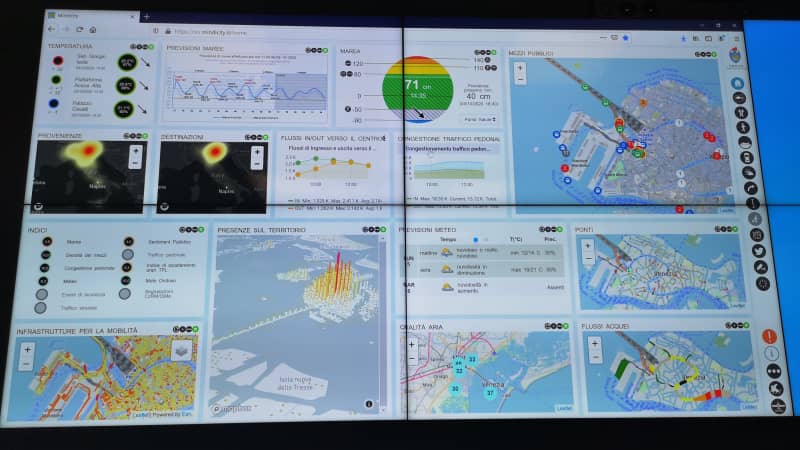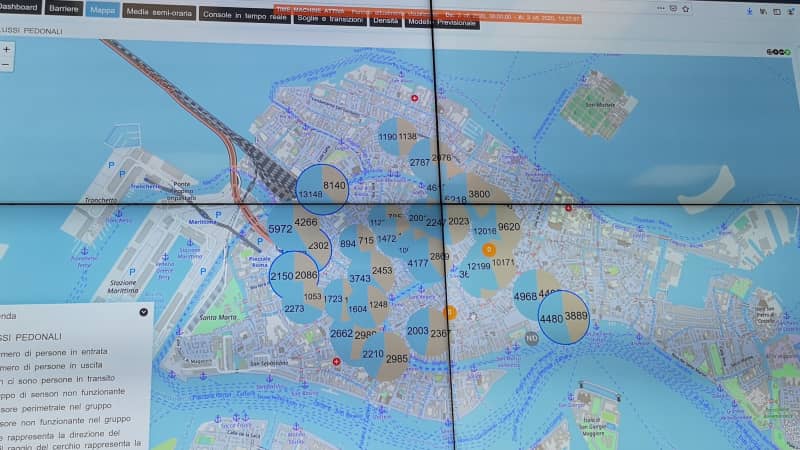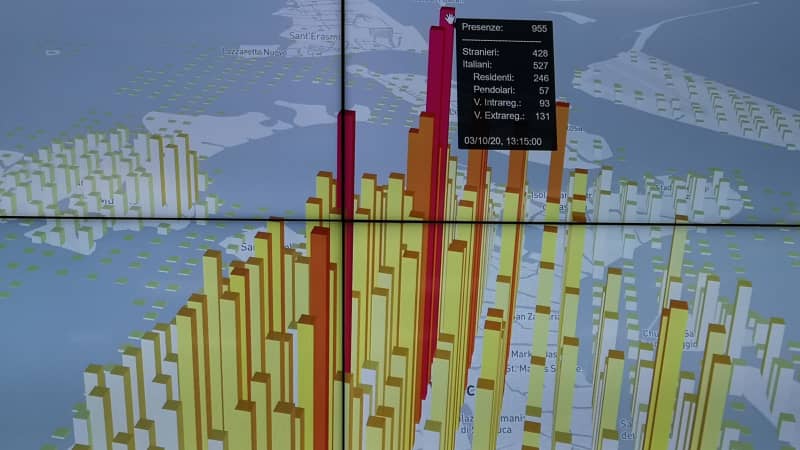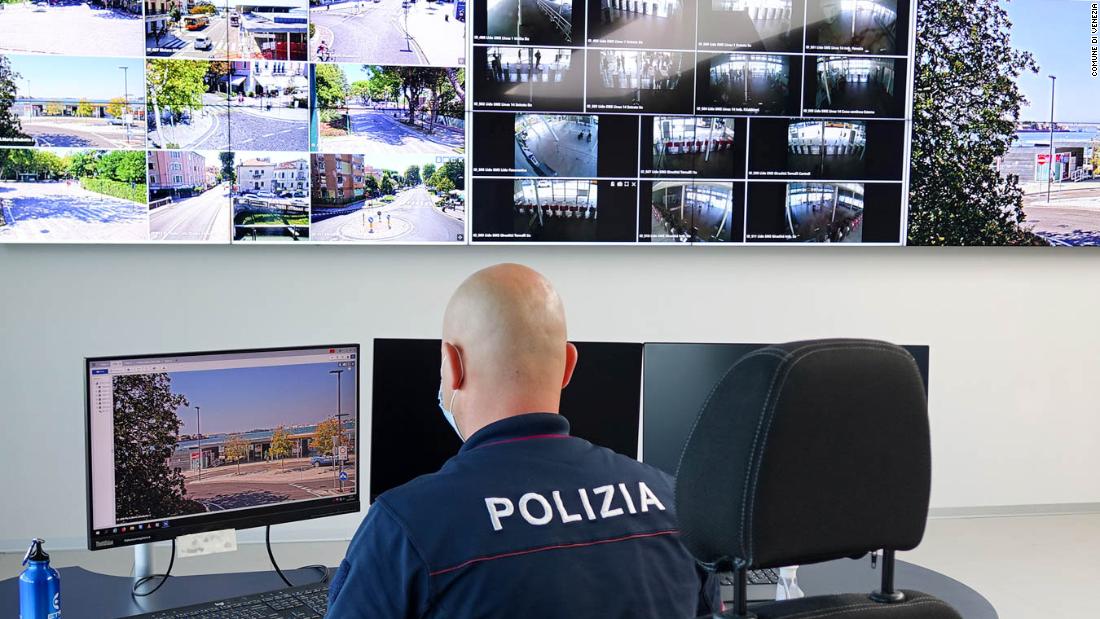(CNN) — They’re watching you, wherever you walk. They know exactly where you pause, when you slow down and speed up, and they count you in and out of the city.
What’s more, they’re tracking your phone, so they can tell exactly how many people from your country or region are in which area, at which time.
And they’re doing it in a bid to change tourism for the better.
Welcome to Venice in a post-Covid world. The canal city may have been known as La Serenissima, or The Most Serene, during its centuries ruling the waves as the powerful Republic of Venice.
In the past few years, however, things have become rather less serene, thanks to the almost 30 million visitors who descend each year on the city of just 50,000 inhabitants.
But as well as controlling footfall, the authorities wanted to track tourism itself — not just by registering overnight guests but, in a city where the vast majority of visitors are daytrippers, by counting exactly who is in the city — and where they go.
Enter the Venice Control Room.
A state-of-the-art ‘control tower’

The control room logs everything from water levels to the main routes people are taking around the city.
Julia Buckley
On the island of Tronchetto, next to the two-mile bridge separating Venice from the Italian mainland, the Control Room opened in September 2020. A former warehouse that had been abandoned since the 1960s, it’s part of a new headquarters for the city’s police and government — a self-described “control tower” for the city.
The building has offices for the mayor, other dignitaries, and a large CCTV room, with cameras feeding in images from around the city, watched over by the police.
So far so normal. But then, across the corridor, there’s the Smart Control Room — another bank of screens with images and information coming live from around the lagoon. They’re not being monitored for crime, though; they’re feeding information to the authorities that will create a profile of the hordes of people visiting Venice. The hope is that gathering the information will not only track footfall now, enabling the authorities to activate turnstiles and start charging for entrance on busy days. Eventually, they hope that the data will help create a more sustainable tourism plan for the future.
How to track tourism

A simulation of the main thoroughfares taken around the city.
Julia Buckley
“We know in real time how many people are in each part [of the city], and which countries they’re from.”
He clicks on the video feed from the Grand Canal — the “freeway” of Venice, as he calls it — to look at the traffic.
“There’s huge traffic pressure here,” he says. Public waterbuses, boats delivering goods, taxis, residents zipping up the “road” in their own, private boats, and, of course, those famous gondolas — they’re all jostling for space on the Grand Canal. With no designated lanes, it can be a free-for-all.
But the new system not only records what’s going on; it analyzes the traffic, recognizing the different types of boats, from gondola to a “topo” — essentially a water-truck. It then stores the numbers. And it even tallies with the public transportation timetables, logging if a waterbus is late and, if so, by how many minutes.
Workers can also activate a “time machine” to look back — so far today, for example, there have been more than 1,000 boats passing under the main bridge at Piazzale Roma, the main entry point to the city.
It’s the pedestrian numbers, however, that are of more interest to the authorities looking at tourism patterns. The system not only counts visitors in the vicinity of cameras posted around the city, but it also, in conjunction with TIM (Telecom Italia, Italy’s largest telecommunications provider), crunches who they are and where they come from.
On this winter day, before the Veneto region entered another semi-lockdown, for example, so far, 13,628 people have entered Venice, and 8,548 have left. In the hour after 7am, 1,688 people arrived at Piazzale Roma (the gateway to the city by road and tram) — the commuters.
At 10am, the arrivals reached a peak of 2,411: most likely the daytrippers.
Tracking visitors by country and area

The authorities hope that tracking visitors will help them understand better the flow of tourists.
Julia Buckley
The authorities can see where these new arrivals are from by analyzing their phone data (the information is all aggregated automatically, so no personal details can be gleaned).
There are 97 people in the area around St Mark’s Square on this Saturday afternoon, according to Bettini — of which only 24 are not Italian.
And so far today there have been 955 people in the area, 428 of whom have come from abroad. Of the 527 Italians, only 246 are resident in Venice (if a mobile phone is regularly logged in the city, it is counted as a resident).
“As you can see, the number of daytrippers — is steep,” says Bettini. This is crucial information, because these “hit-and-run” tourists are usually charged with causing the most damage to the struggling city. They tend to come in from other parts of Italy — often from beach resorts on a bad weather day — and rarely spend money, bringing their own food and eating illicit picnics on bridges and on waterfronts. But since they don’t stay overnight, they cannot be counted by the authorities — until now.
Counting the daytrippers and tracking where they tend to visit, and which streets they take, could be crucial for a city which has resorted to closing its main thoroughfares to non-locals at busy times in an attempt to spread people throughout the city.
Where are you from?

Working with a telephone operator, authorities can trace where those currently in the city are from.
Julia Buckley
Italians are logged by the region they live in. Of the foreigners, the system breaks down where they come from (data is based on where their mobile phone is registered, so most likely their country of origin), and displays them as bars on a map on the city — a graphic representation of overcrowding in real time, with colors going from white to red as the numbers get higher.
Today, 36% of foreign visitors are German, followed by the Swiss (16%) and British (13% — this visit took place before the new UK variant saw British travelers banned from Italy). Just 1.312% of visitors are from the United States — although, given that American travelers are still banned from the European Union, it’s a surprise it’s even that much.
And today, there have been 85,000 people logged in Venice. A much greater number, 177,000, have been in Mestre, on the mainland. On the islands — where places such as Burano and Murano are popular with tourists — there are 5,700 people, this Saturday afternoon.
The system took three years to build, at a cost of €3m ($3.5m). And although some might baulk at the privacy implications (although no personal data is recorded, you and your provenance is essentially being logged as you move around the city), the authorities are very proud.
“In 2021, Venice celebrates its 1,600th anniversary,” says Bettini. “And we’ll be celebrating with technology.”
